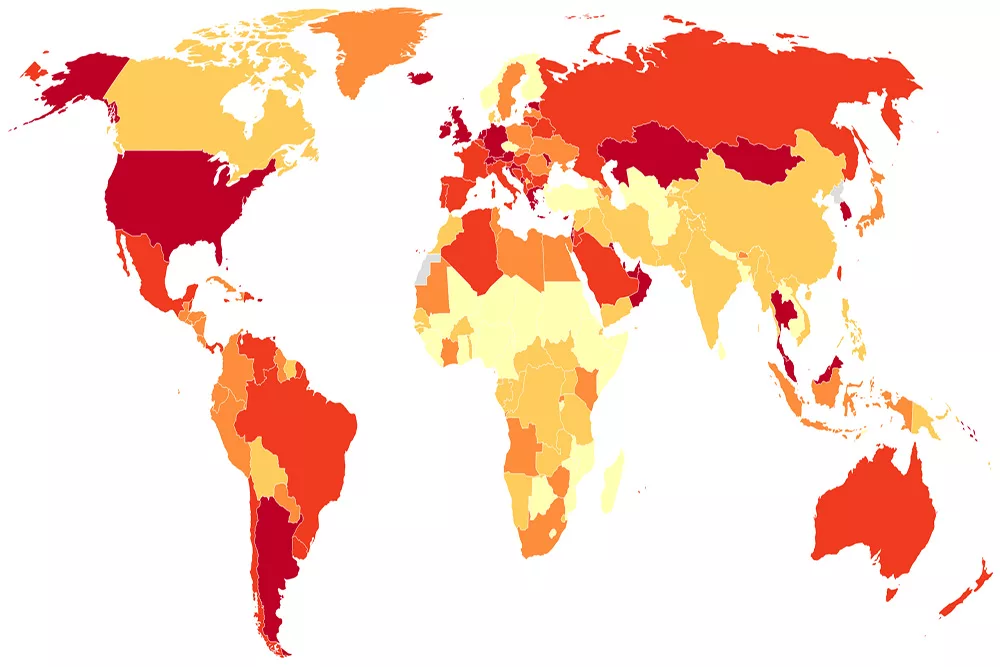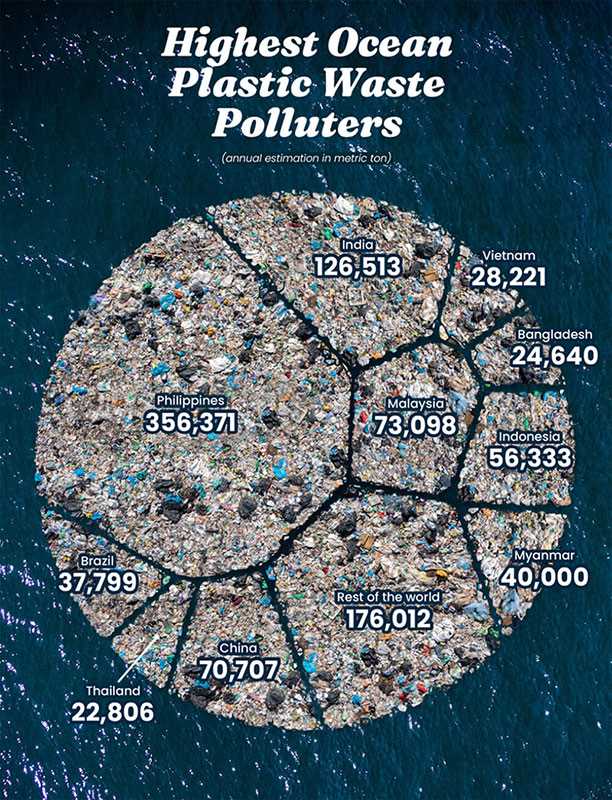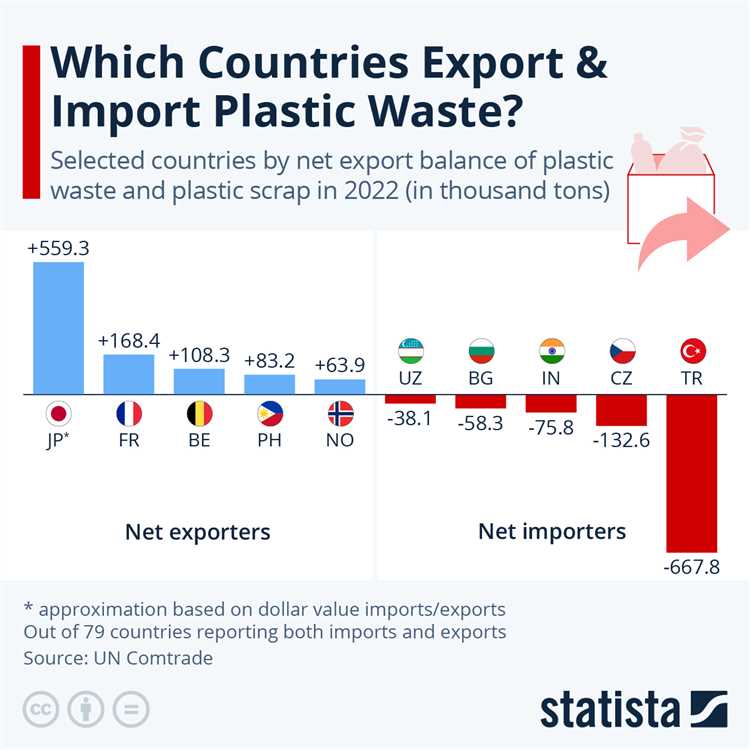
Plastic has become one of the most ubiquitous materials in the world, with countless products and packaging made from it. But have you ever wondered which country is responsible for manufacturing the lion’s share of this versatile material?
Look no further than [name of the leading country], the undisputed leader in plastic manufacturing. With its sophisticated infrastructure and cutting-edge technology, this country has revolutionized the production of plastic and cemented its status as a global powerhouse in this industry.
But what sets [name of the leading country] apart from other nations? It’s not only their impressive production capacity but also their commitment to innovation and sustainability. Through meticulous research and development, they have continuously improved their manufacturing processes to reduce waste and minimize the environmental impact of plastic production.
In addition to their technological prowess, [name of the leading country] has also established itself as a major exporter of plastic products. Their products, ranging from everyday items to high-tech components, are sought after worldwide for their quality and reliability.
So, next time you hold a plastic product in your hand, remember that it may have originated from the plastic famous [name of the leading country]. Their unwavering dedication to excellence and innovation has propelled them to the forefront of the global plastic manufacturing industry, making them an undeniable force to be reckoned with.
- Plastic Famous: The Global Issue
- The Impact of Plastic
- Tackling the Issue
- Plastic Manufacturing: Scale of the Problem
- A Race to the Top: Leading Countries
- Plastic Giants: Unveiling the Winner
- Environmental Consequences: Impact of Plastic Manufacturing
- The Way Forward: Solutions and Future Outlook
- 1. Reducing Plastic Production
- 2. Investing in Recycling Infrastructure
- Q&A:
- Which country is the leading manufacturer of plastic?
- Why is China the leading country in plastic manufacturing?
- How much plastic does China produce?
- What are the main uses of plastic in China?
- What are the environmental impacts of China’s plastic manufacturing?
- Which country is the leading country in plastic manufacturing?
- Why is China the leading country in plastic manufacturing?
Plastic Famous: The Global Issue
In recent years, plastic pollution has become one of the most pressing global issues. With an exponential increase in plastic production and consumption, the world is now facing severe environmental consequences.
The Impact of Plastic
Plastic waste has an immense impact on the health of our oceans, wildlife, and human beings. It is estimated that each year, more than 8 million tons of plastic enter our oceans, threatening marine life and ecosystems.
Plastic pollution affects a wide range of species, from seabirds to sea turtles, and can even disrupt the entire food chain. The ingestion of plastic has been linked to various health issues in marine life, often resulting in death.
Tackling the Issue
Efforts to address the plastic pollution crisis are underway globally. Many countries have implemented policies to reduce plastic consumption and encourage recycling. These measures include bans on single-use plastics, the promotion of reusable alternatives, and the introduction of plastic waste management systems.
Educating the public about the detrimental effects of plastic pollution is also a crucial component of tackling the issue. By raising awareness and promoting sustainable practices, we can all contribute to minimizing plastic waste and protecting our planet.
It is vital for individuals, businesses, and governments to work together to find innovative solutions to combat plastic pollution and create a more sustainable future.
Let us join forces in the fight against plastic pollution and make a difference for generations to come.
Plastic Manufacturing: Scale of the Problem
Plastic manufacturing has become a major global industry, with production levels reaching unprecedented heights in recent decades. The scale of the plastic manufacturing problem is staggering, as the demand for plastic products has skyrocketed and the consequences of their production and disposal have become increasingly apparent.
To truly understand the scale of the problem, let’s take a look at some key statistics:
| Statistic | Value |
|---|---|
| Total global plastic production in 2019 | 368 million metric tons |
| Plastic waste generated in 2019 | 292 million metric tons |
| Plastic waste mismanaged in low-income countries | 90% |
| Plastic waste mismanaged in high-income countries | 9% |
| Global plastic recycling rate | 9% |
| Plastic waste in the ocean | 8 million metric tons per year |
These statistics paint a clear picture of the immense scale of the plastic manufacturing problem. The production of plastic has resulted in a massive amount of waste that is being mismanaged, particularly in low-income countries where recycling and waste management infrastructure is lacking. This mismanaged waste often ends up polluting our oceans, causing immeasurable harm to marine life and ecosystems.
Addressing the scale of the plastic manufacturing problem requires a multifaceted approach. It involves reducing plastic production and consumption, improving waste management systems, and investing in recycling technologies. Only by tackling the problem at its root and implementing sustainable solutions can we hope to mitigate the negative impacts of plastic manufacturing.
A Race to the Top: Leading Countries

As plastic production continues to increase globally, several leading countries have emerged as key players in the manufacturing industry. These countries have established themselves as leaders in plastic manufacturing, contributing significantly to the overall production and consumption of plastic.
1. China: China is currently the world’s largest producer and consumer of plastic. The country’s plastic manufacturing industry has experienced rapid growth over the past few decades, driven by factors such as population growth, urbanization, and industrialization. China’s dominance in plastic manufacturing can be attributed to its large population, robust infrastructure, and low production costs.
2. United States: The United States is another leading country in plastic manufacturing. With its advanced technology, research and development capabilities, and established supply chains, the US produces a significant amount of plastic products. The country is home to several major plastic manufacturers, contributing to its position as a leading player in the global plastic market.
3. Germany: Known for its precision engineering and manufacturing expertise, Germany has emerged as a powerhouse in the plastic industry. The country is home to many world-class plastic manufacturers that specialize in producing high-quality and innovative plastic products. Germany’s focus on sustainability and environmentally friendly practices further enhances its reputation as a leading country in plastic manufacturing.
4. Japan: Japan has long been recognized for its technological advancements and innovation in various industries, and plastic manufacturing is no exception. The country is known for its efficient production processes, high-quality plastic products, and strong commitment to research and development. Japan’s plastic manufacturers continuously strive to improve and innovate, further establishing the country as a key player in the global plastic market.
5. India: In recent years, India has emerged as a significant player in the plastic manufacturing industry. The country’s growing middle class, expanding consumer market, and favorable investment climate have contributed to its rapid growth in plastic production. India’s plastic manufacturers focus on producing affordable and durable plastic products to cater to the needs of a diverse population.
These countries are driving the global plastic manufacturing industry forward, continually innovating to meet the growing demands of various sectors. As the demand for plastic continues to rise, these leading countries will play a crucial role in shaping the industry’s future.
Plastic Giants: Unveiling the Winner

After exploring and analyzing plastic manufacturing data from around the world, one country has emerged as the clear winner in the race for plastic production dominance.
The leading plastic giant is none other than China. With its vast manufacturing capabilities and a population of over 1.4 billion, China has cemented itself as the unrivaled leader in the plastic industry.
China’s success in plastic manufacturing can be attributed to several key factors. Firstly, the country has invested heavily in infrastructure and technological advancements, allowing for efficient and cost-effective production processes.
In addition, China benefits from an abundant supply of natural resources, including oil and natural gas, which are essential for plastic production. This access to raw materials gives China a significant advantage over other countries in terms of manufacturing capacity and cost.
Furthermore, China’s strategic location and well-established trade networks allow for easy export of plastic products to countries around the world. This global reach has contributed to China’s status as the leading exporter of plastic goods.
However, it’s worth noting that China’s plastic manufacturing dominance has come with environmental consequences. The country has faced criticism for its high levels of plastic waste and pollution, prompting efforts to improve recycling and reduce plastic consumption.
While China may be the current plastic giant, it’s important to keep an eye on emerging players in the industry. Countries such as the United States, Germany, and India are making significant strides in plastic manufacturing and could potentially challenge China’s position in the future.
As the world becomes increasingly aware of the environmental impact of plastic, it is crucial for all countries to prioritize sustainable and responsible manufacturing practices to ensure a greener future.
Environmental Consequences: Impact of Plastic Manufacturing
Plastic manufacturing has become an integral part of our modern lives, but it also comes with significant environmental consequences. The production and disposal of plastic products contribute to a range of negative impacts on our planet, affecting ecosystems, wildlife, and human health.
One of the major environmental issues associated with plastic manufacturing is the pollution of our oceans and waterways. Millions of tons of plastic waste end up in the ocean every year, causing serious harm to marine life. Sea turtles, birds, and other marine animals often mistake plastic for food and can suffer from ingestion or entanglement. This not only leads to the death of many species but also disrupts the balance of marine ecosystems.
In addition to marine pollution, plastic manufacturing also contributes to air pollution and greenhouse gas emissions. The production of plastic involves the extraction and processing of fossil fuels, which releases harmful pollutants into the atmosphere. These pollutants, such as carbon dioxide and methane, contribute to climate change and the depletion of the ozone layer.
The disposal of plastic waste is another significant environmental consequence of plastic manufacturing. Plastic products can take hundreds of years to decompose, and in the meantime, they can leach harmful chemicals into the soil and water. This can contaminate drinking water sources and pose a risk to human health.
Furthermore, the extraction of raw materials for plastic manufacturing, such as oil and natural gas, contributes to habitat destruction and deforestation. This can have devastating effects on local ecosystems and the biodiversity of the affected regions.
To address these environmental consequences, it is crucial to reduce plastic consumption, promote recycling and waste management practices, and develop more sustainable alternatives to plastic. Governments, industries, and individuals all play a role in mitigating the impact of plastic manufacturing on our environment and ensuring a healthier and more sustainable future for generations to come.
The Way Forward: Solutions and Future Outlook
In order to address the pressing issue of plastic manufacturing and its environmental impact, it is crucial for countries around the world to come together and find solutions. The leading country in plastic manufacturing should take the initiative and lead the way towards a more sustainable future.
1. Reducing Plastic Production
One of the main solutions is to reduce the production of plastic. This can be achieved through various measures such as implementing stricter regulations on plastic manufacturing, promoting the use of alternative materials, and encouraging the development of biodegradable plastics.
By reducing plastic production, we can minimize the amount of plastic waste that ends up in our oceans and landfills. This will help protect marine life and ecosystems, as well as reduce the overall carbon footprint associated with plastic manufacturing.
2. Investing in Recycling Infrastructure
Another important solution is to invest in recycling infrastructure. This includes establishing recycling facilities, improving waste management systems, and educating the public about the importance of recycling.
By expanding recycling capabilities, we can ensure that more plastic waste is being properly recycled and turned into new products. This reduces the need for virgin plastic production and helps close the loop on plastic waste.
Furthermore, investing in recycling infrastructure can create new job opportunities and stimulate economic growth in the leading country in plastic manufacturing.
It is essential for countries to work together and share knowledge and best practices in order to find effective solutions to the plastic manufacturing crisis. By taking action now, we can create a better future for our planet and future generations.
Q&A:
Which country is the leading manufacturer of plastic?
The leading country in plastic manufacturing is China.
Why is China the leading country in plastic manufacturing?
China is the leading country in plastic manufacturing due to its large population, low labor costs, and extensive infrastructure.
How much plastic does China produce?
China produces over 30% of the world’s total plastic, with a production of around 60 million metric tons per year.
What are the main uses of plastic in China?
The main uses of plastic in China are in packaging, construction materials, textiles, and consumer goods.
What are the environmental impacts of China’s plastic manufacturing?
China’s plastic manufacturing has significant environmental impacts, including pollution of waterways, air pollution from production processes, and the generation of large amounts of plastic waste.
Which country is the leading country in plastic manufacturing?
The leading country in plastic manufacturing is China. It produces nearly 30% of the world’s total plastic supply.
Why is China the leading country in plastic manufacturing?
China is the leading country in plastic manufacturing due to several factors. Firstly, it has a large population, which provides a large labor force and consumer market. Secondly, it has a well-developed manufacturing infrastructure and technologies. Additionally, China has lower labor and production costs compared to many other countries.